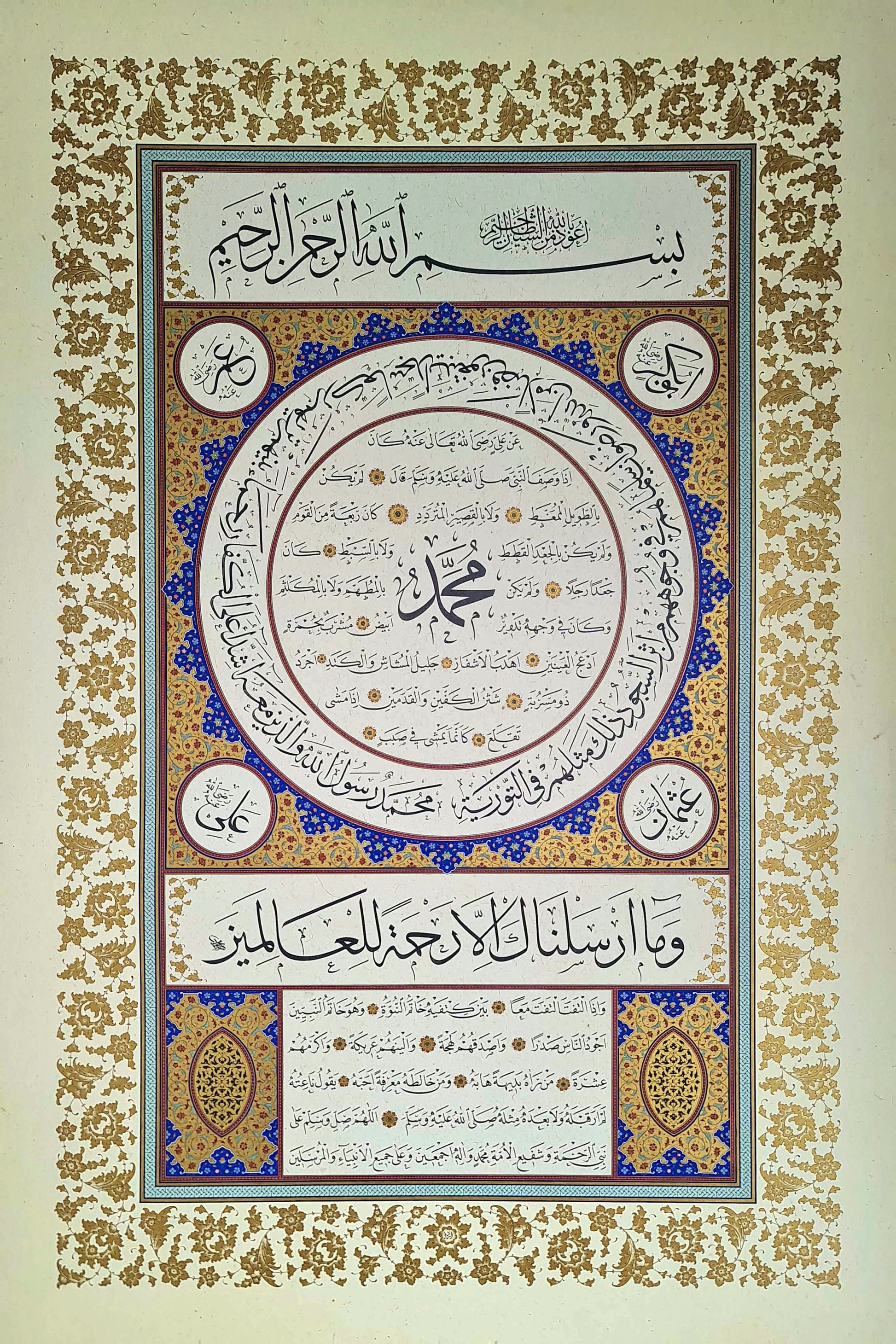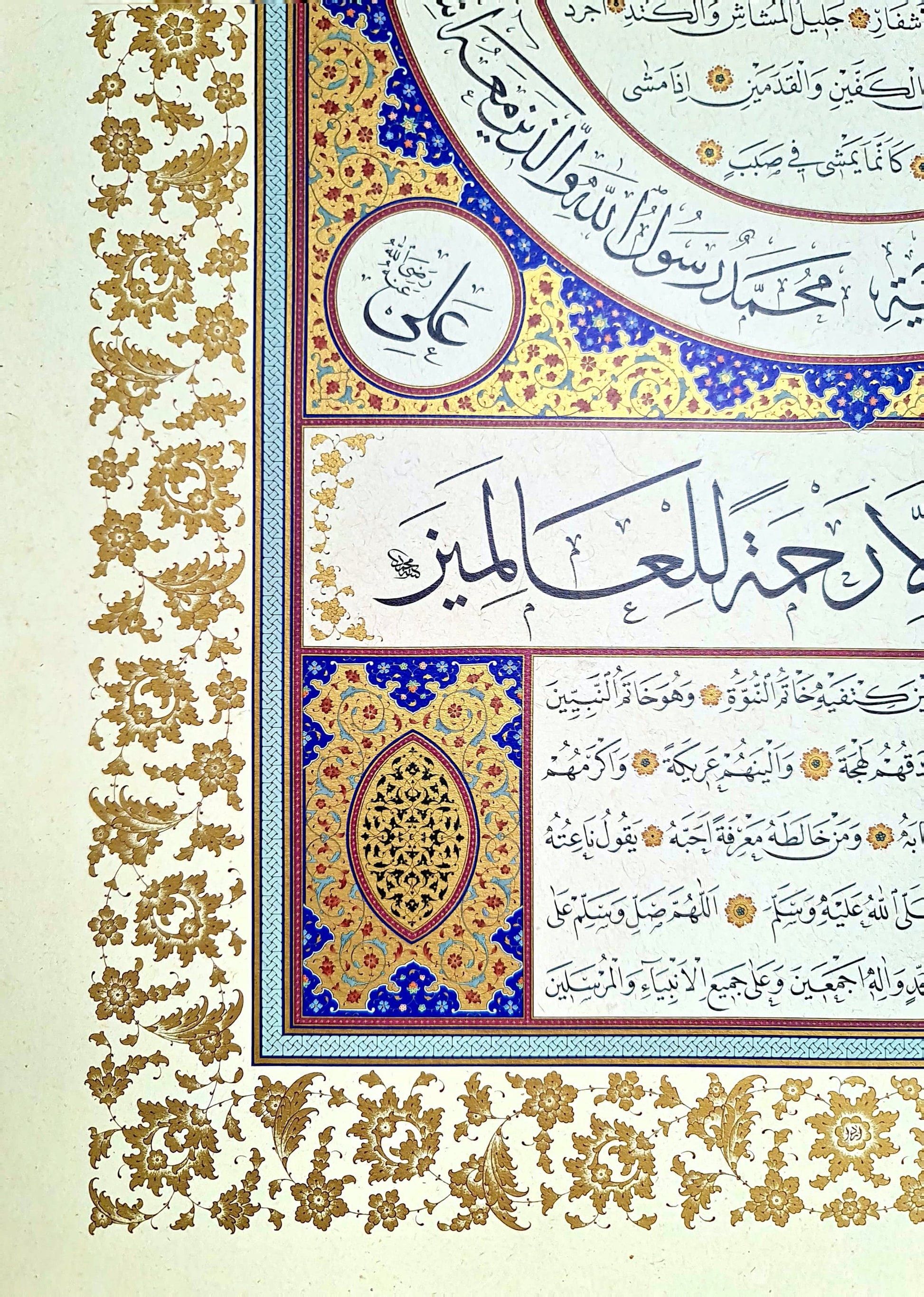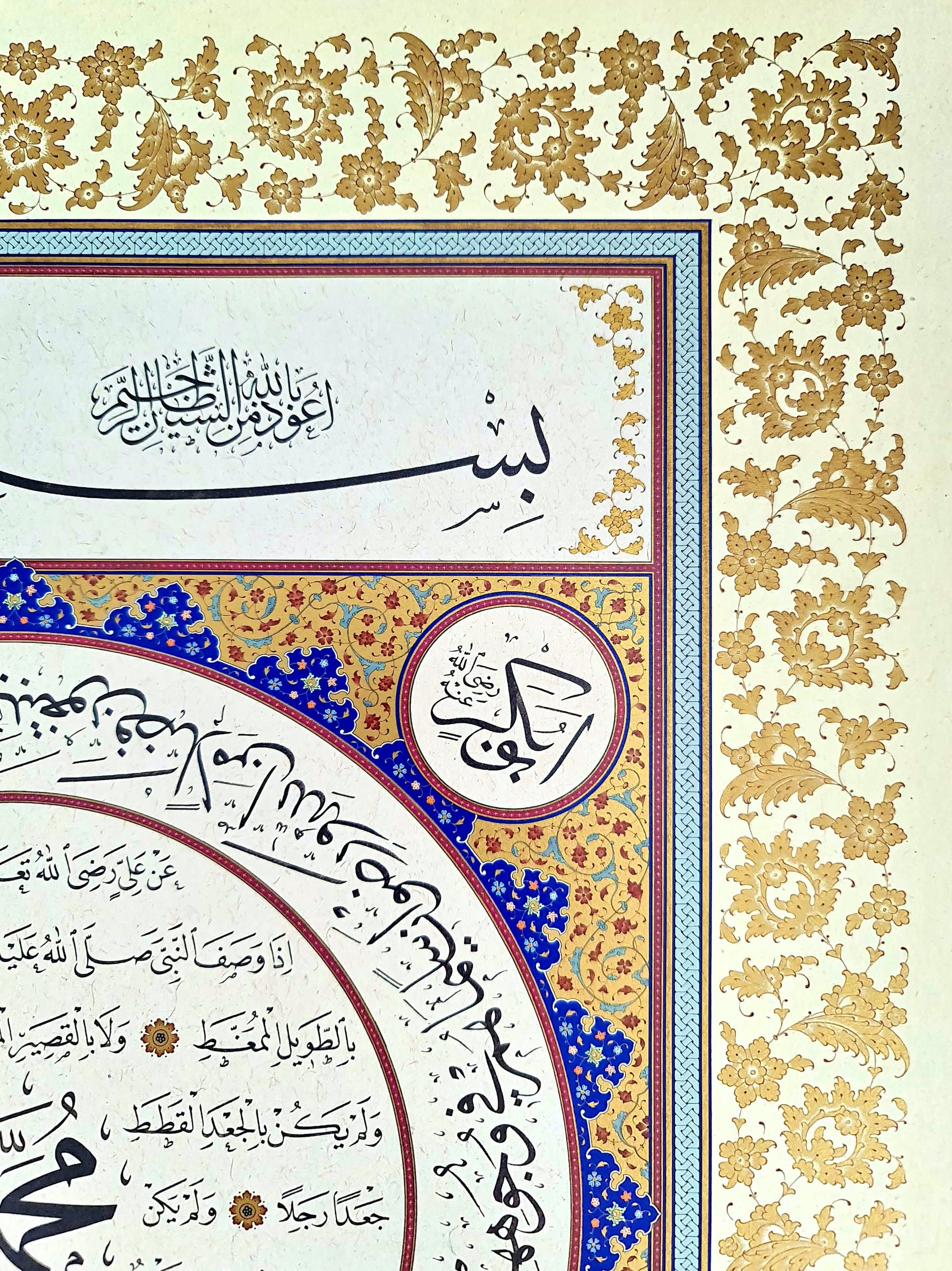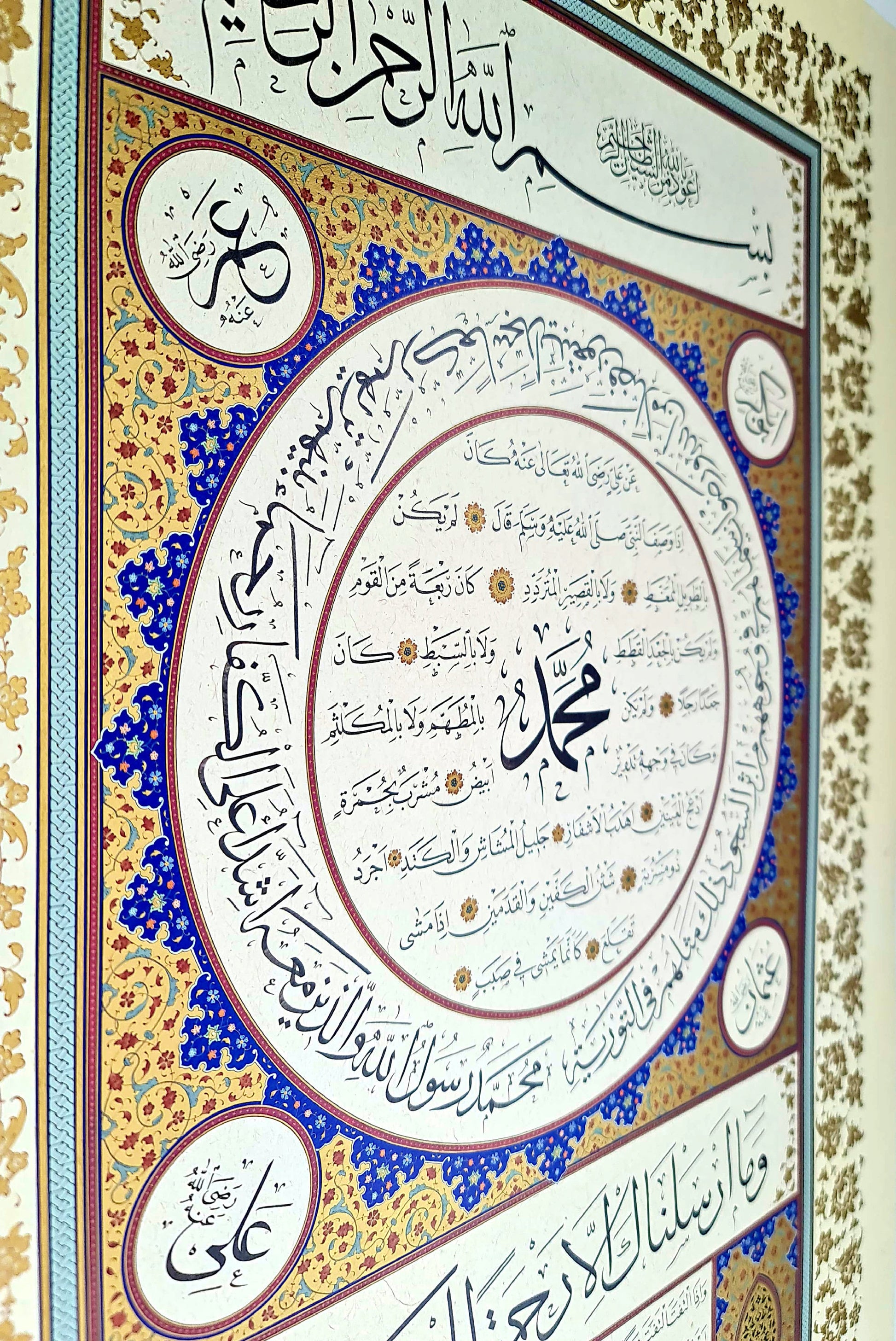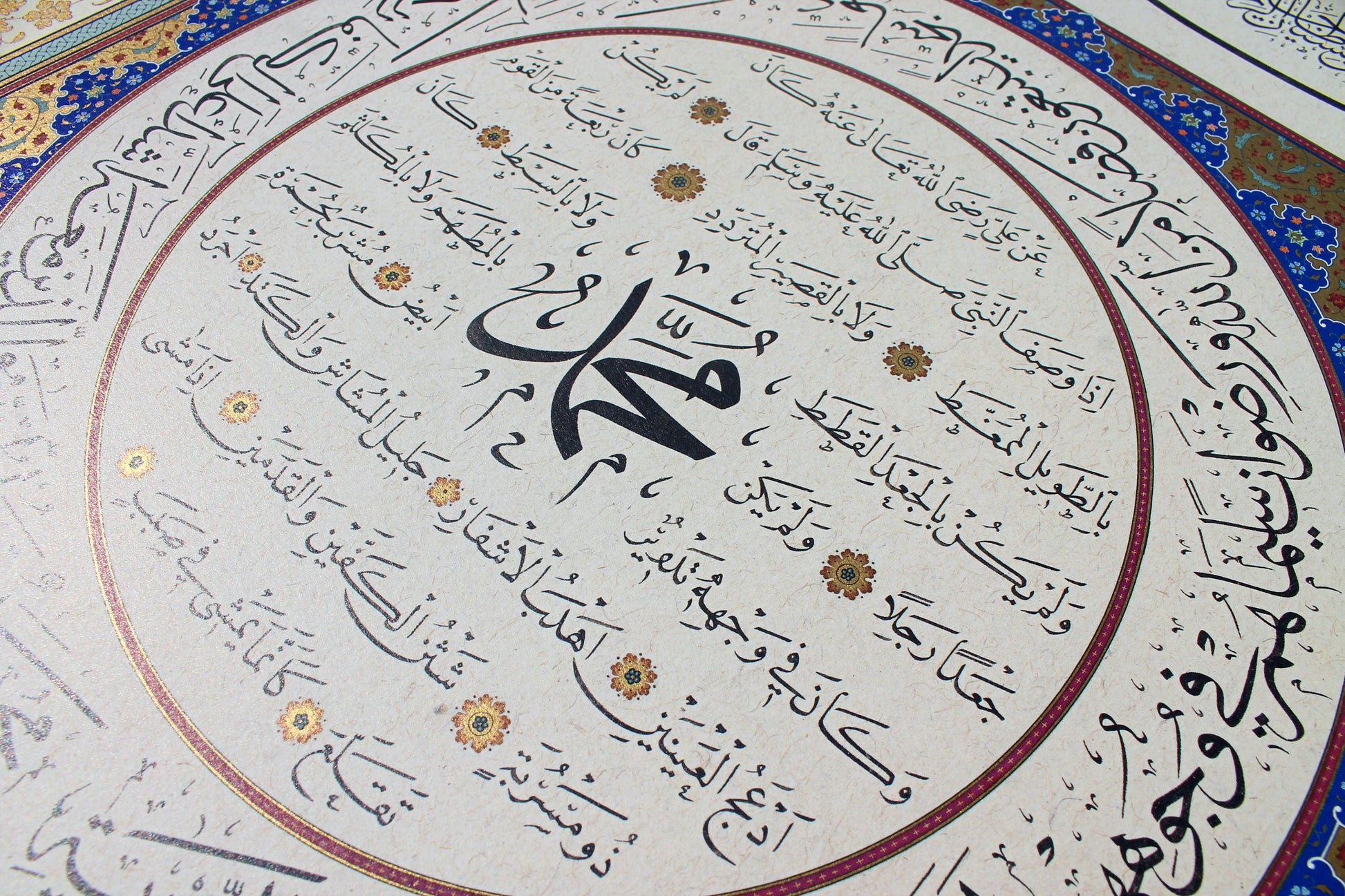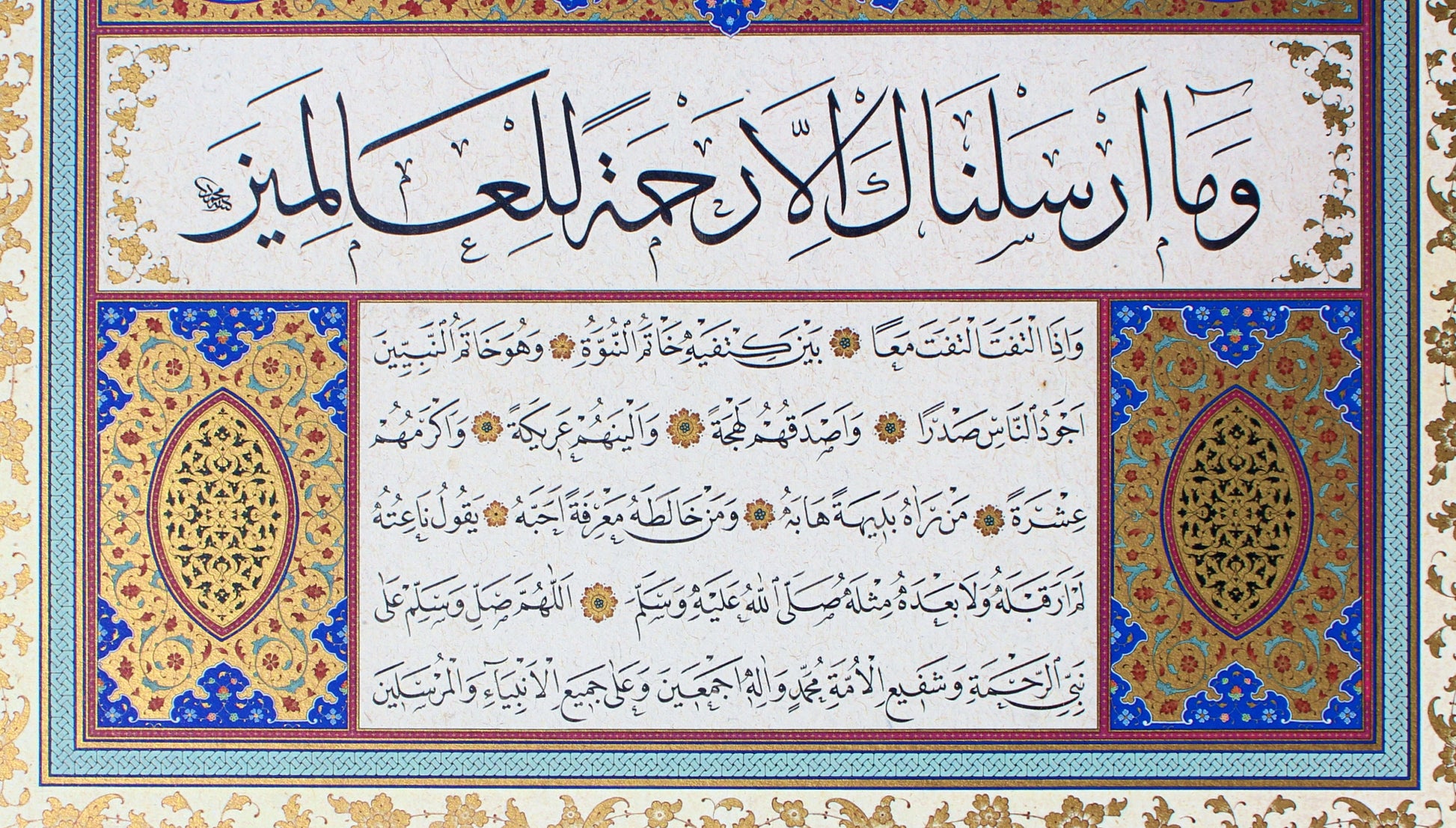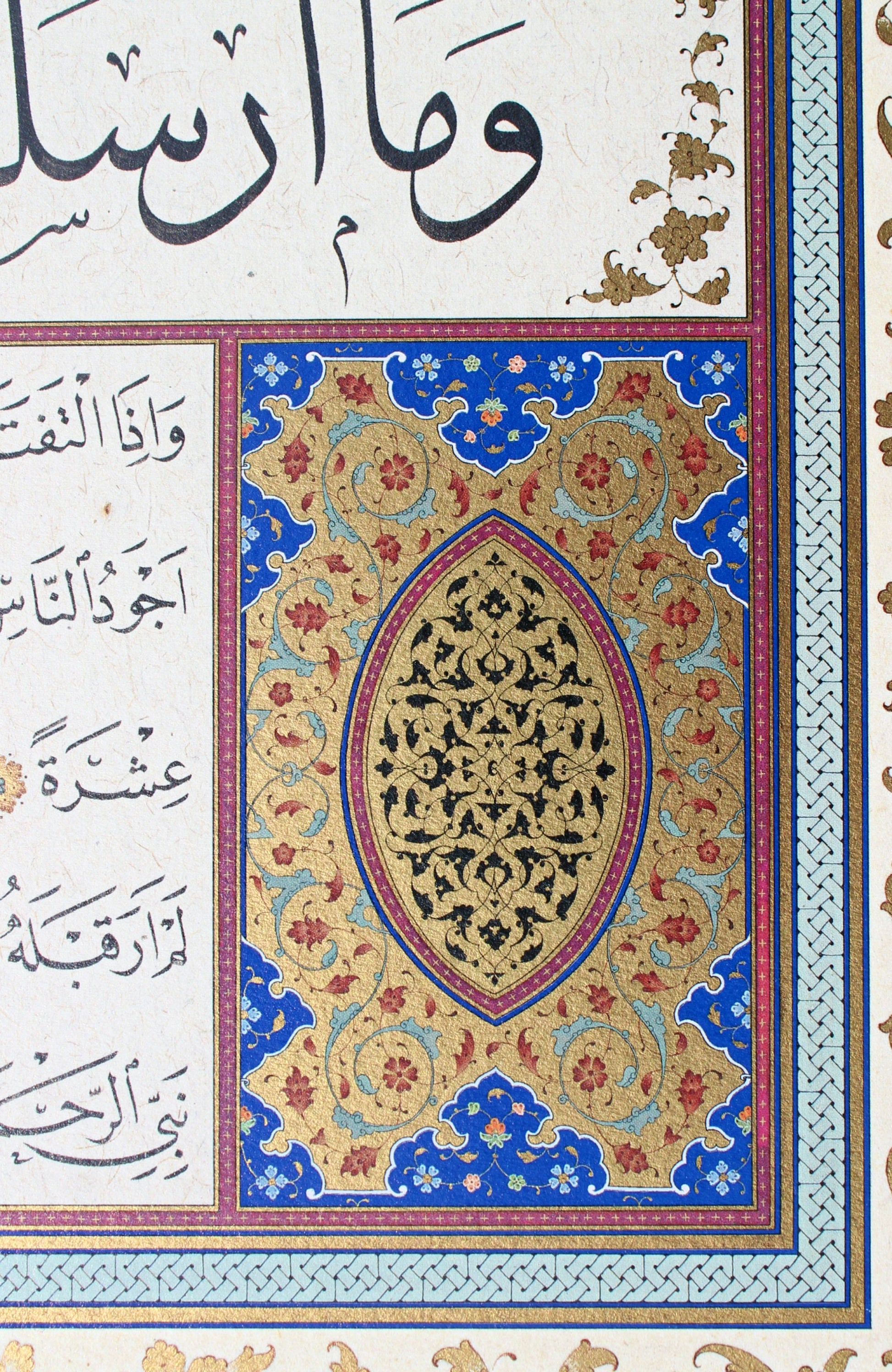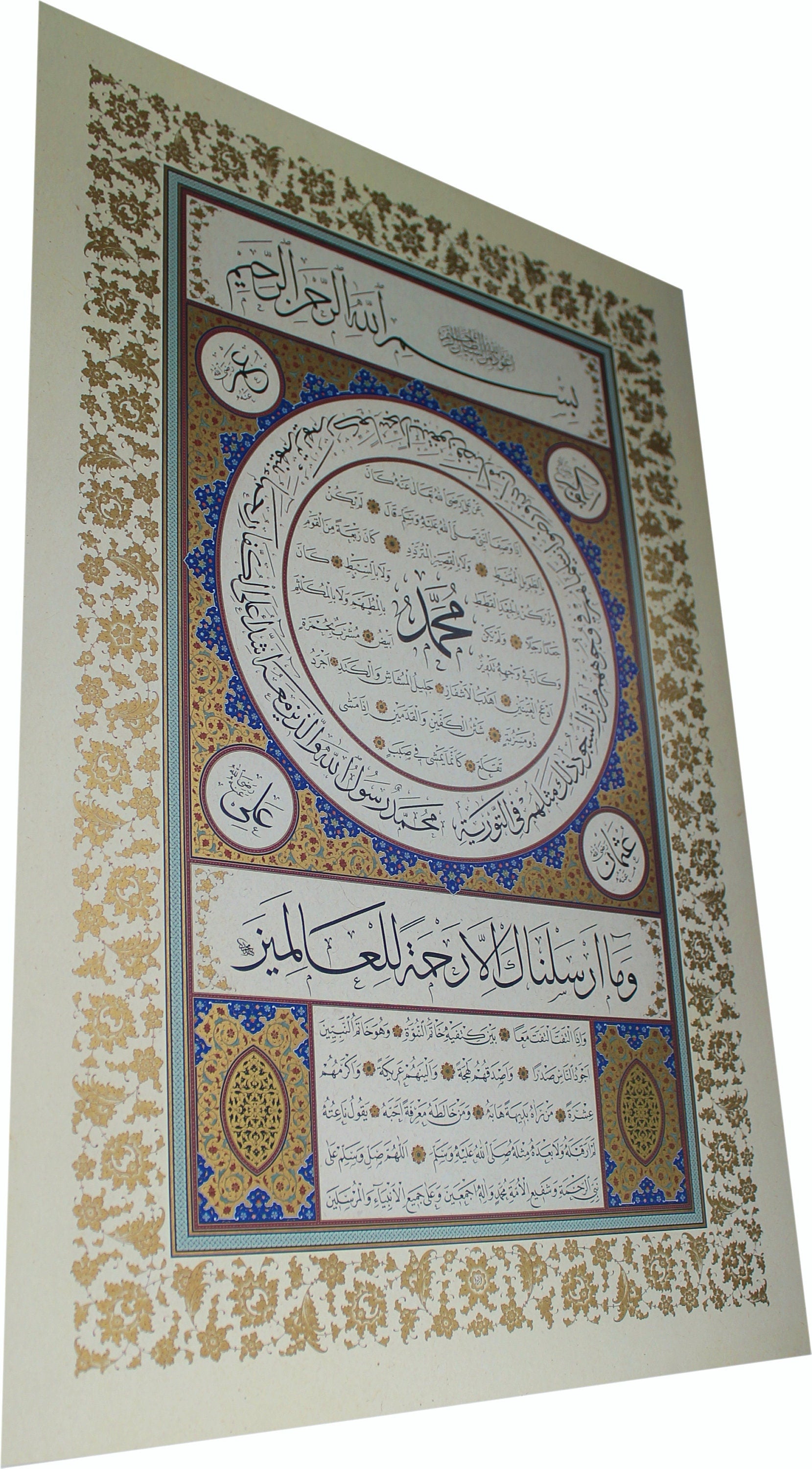sabilarthouse
Illuminated textual portrait (hilya) of the Prophet Muhammad | Calligraphy by Mehmed Özçay | Beautiful Islamic wall art
Illuminated textual portrait (hilya) of the Prophet Muhammad | Calligraphy by Mehmed Özçay | Beautiful Islamic wall art
Couldn't load pickup availability
This beautiful hilye features the hilye (verbal portrait) of the Prophet Muhammad ﷺ.
It has been composed by the Turkish master calligrapher Mehmed Özçay in elegant sülüs and nesih (thuluth and naskh). The work has been beautifully illuminated by Arda Çakmak.
At the head of the work is the basmala, accompanied by the ta'awwudh in smaller script just above.
The large, central roundel below contains a hadith from the collection of Imam al-Tirmidhi that has been narrated from Imam 'Ali (may God be pleased with him). The hadith describes the physical qualities of the Prophet as well as his noble characteristics:
[Narrated] from Ali, may God honour him, when he described the Prophet (ﷺ) he said: He was neither very tall nor excessively short, but was a man of medium size. He had neither very curly nor flowing hair but a mixture of the two. He did not have a large body. He did not have a very round face, but it was so to some extent. His complexion was reddish-white. He had wide black eyes and long eyelashes. He had large joints and the portion between the two shoulders was broad. He was not hairy but had some hair running from the chest to the navel. He had thick palms and feet. When he walked he raised his feet as though he were walking on a slope. When he turned round he turned completely. [Break in text, which continues below verse 21:107] Between his shoulders was the seal of prophecy, and he was the seal of the prophets. He was more generous in spirit than anyone else, truer in utterance, gentler in nature and nobler by tribe. Those who saw him suddenly stood in awe of him, and those who shared his acquaintanceship loved him. Those who described him said they had never seen anyone like him before or since [Adapted from the translation of Tim Stanley in 'From text to art form in the Ottoman hilye].
Surrounding this larger roundel are four smaller roundels carrying the names of the four Rightly-Guided caliphs (Abu Bakr, ʿUmar, ʿUthman, and ʿAli), which feature in the four corners around the center.
This piece also has the additional feature of a portion of verse 48:29 written in circular sülüs around the main roundel: 'Muhammad is the Messenger of God. Those who follow him are harsh towards the disbelievers and compassionate towards each other. You see them kneeling and prostrating, seeking God’s bounty and His good pleasure: on their faces they bear the marks of their prostrations. This is how they are pictured in the Torah...'
Below the central roundel verse 21:107 of the Qur'an, 'It was only as a mercy that We sent you [Prophet] to all people.'
The hilye concludes with the prayer: 'O Allah, send Peace and Blessings upon the Prophet of mercy, the intercessor of the community Muhammad, and on all prophets and messengers.'
===============
Limited edition high-quality lithograph print (1000 copies)
Size: 686 x 465 mm.
Illumination: Arda Çakmak
===============
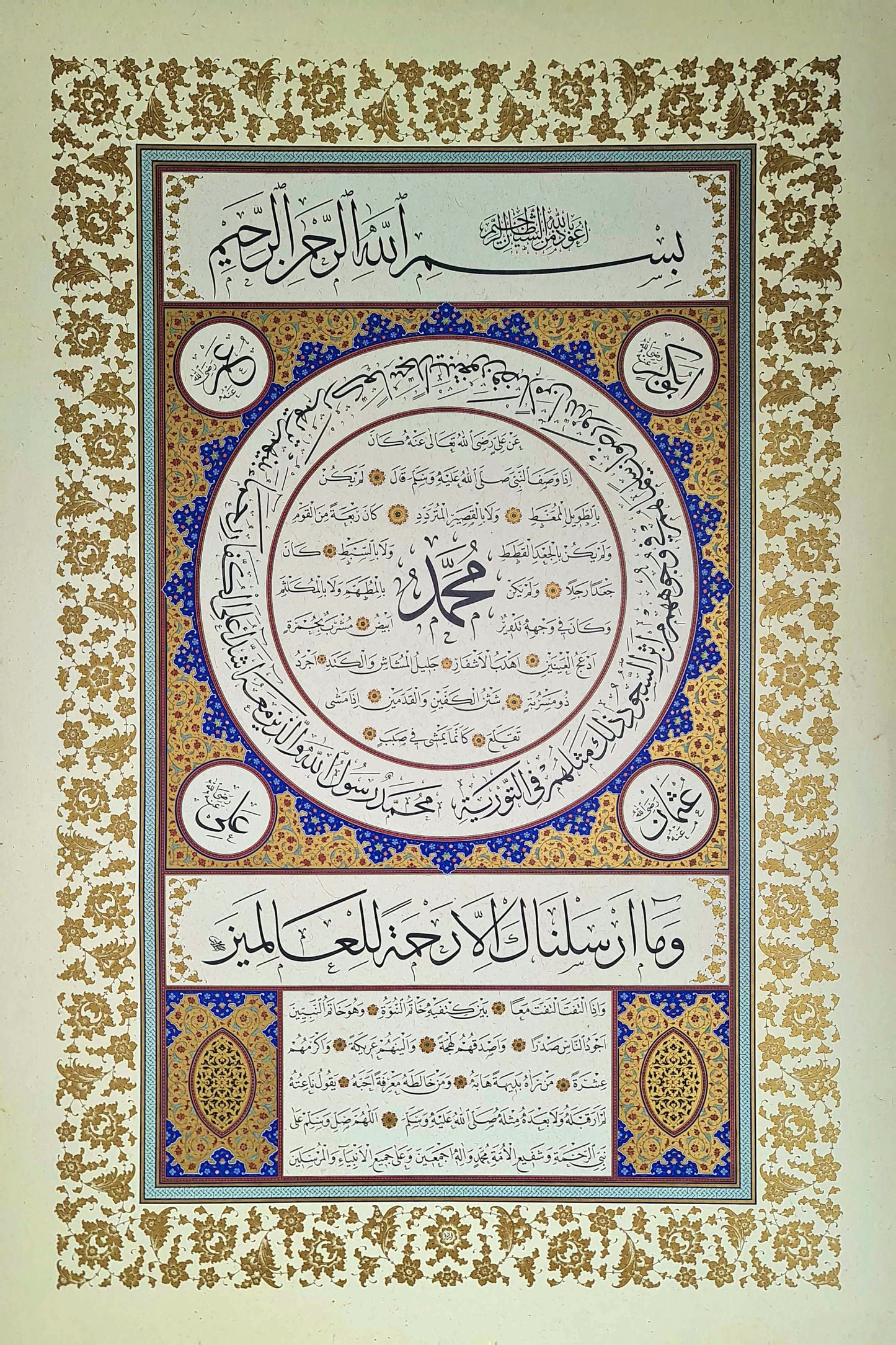
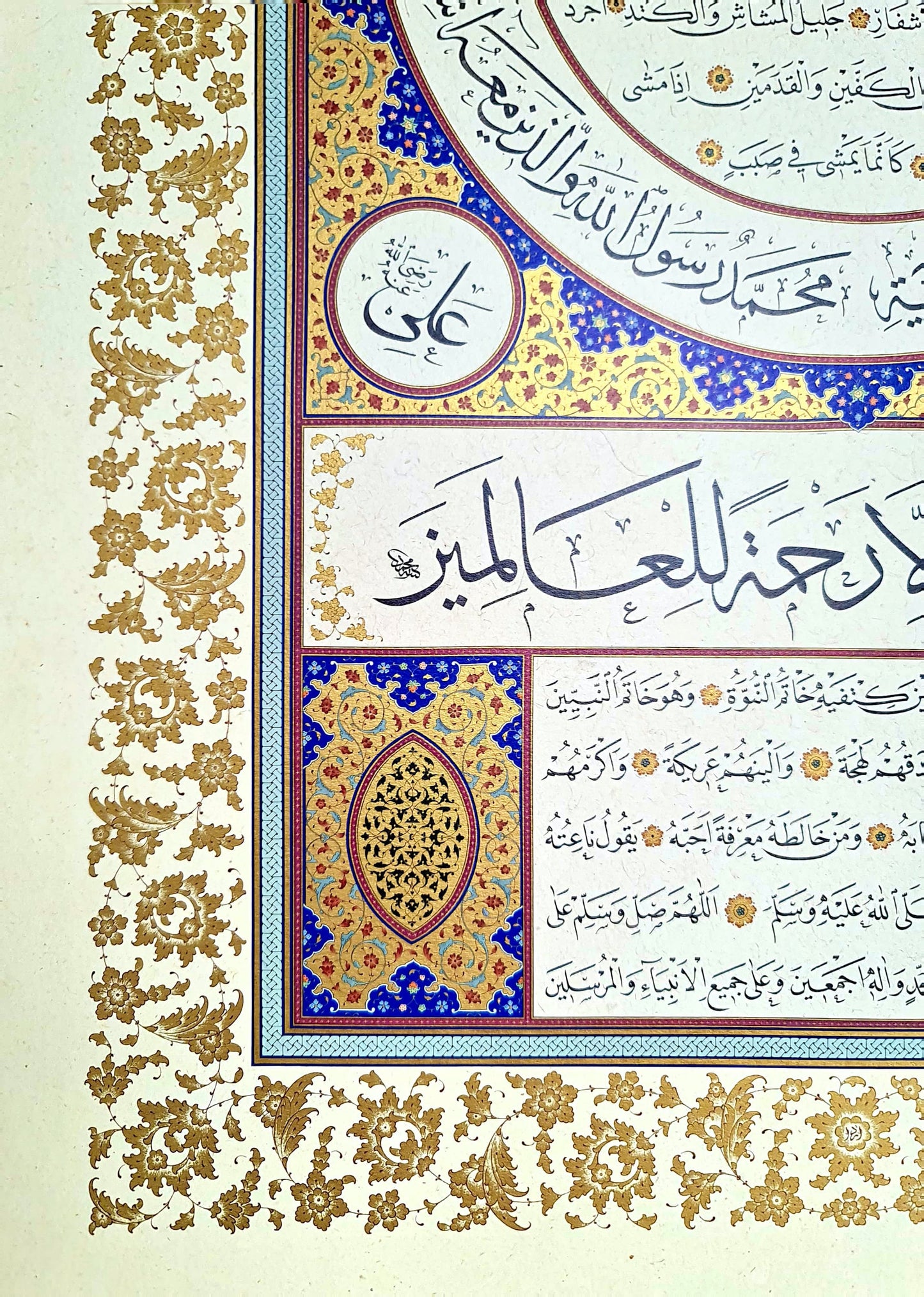
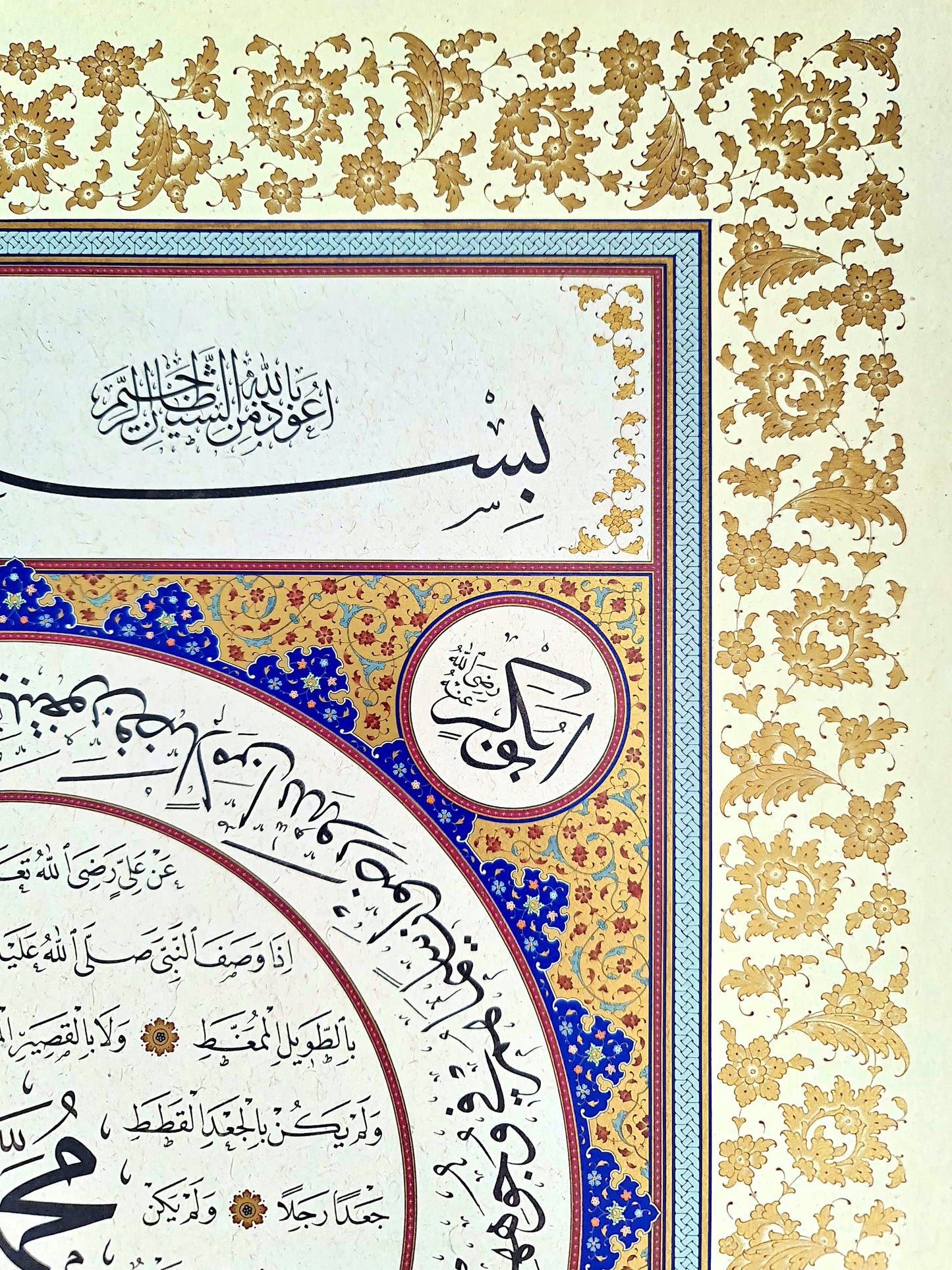
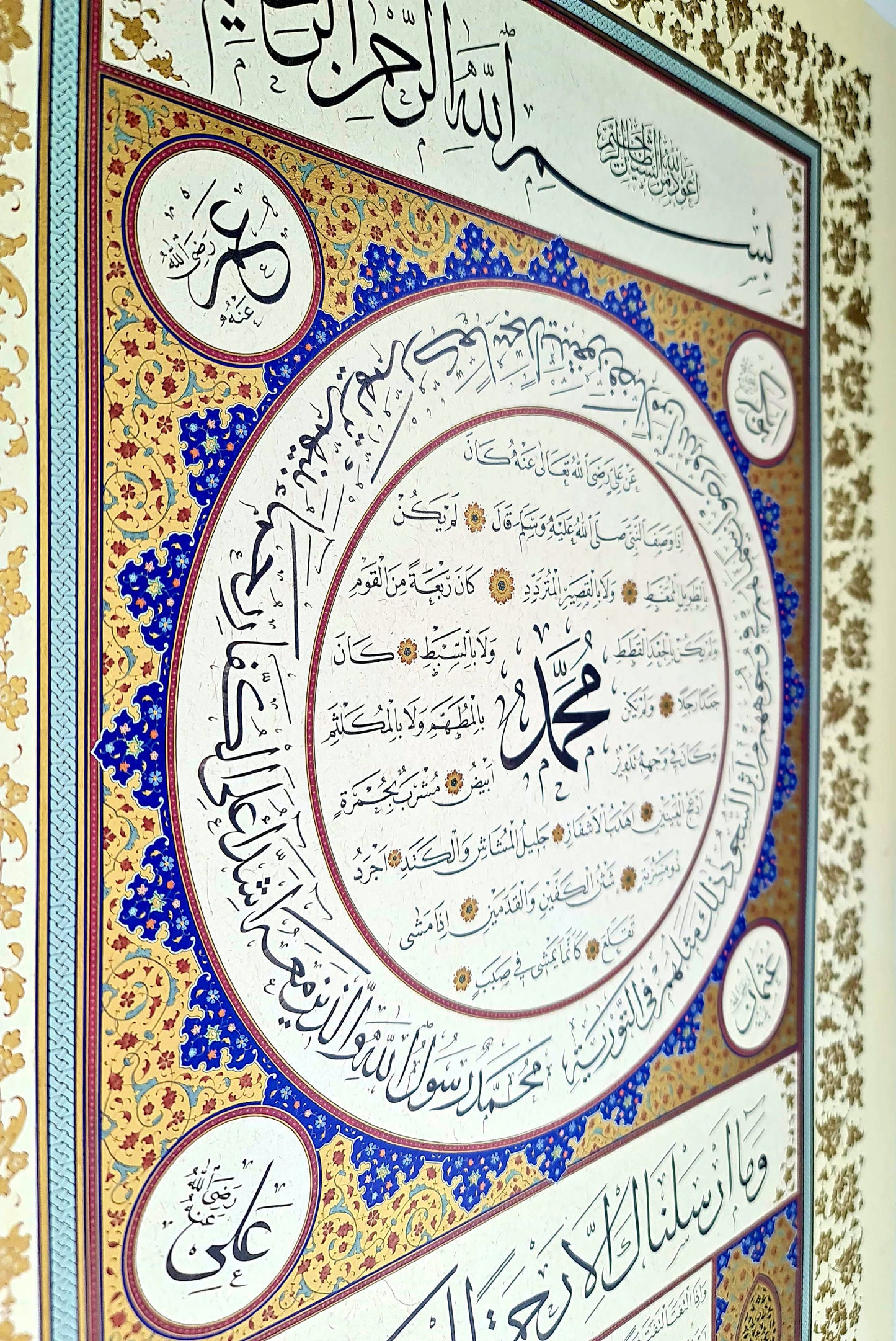
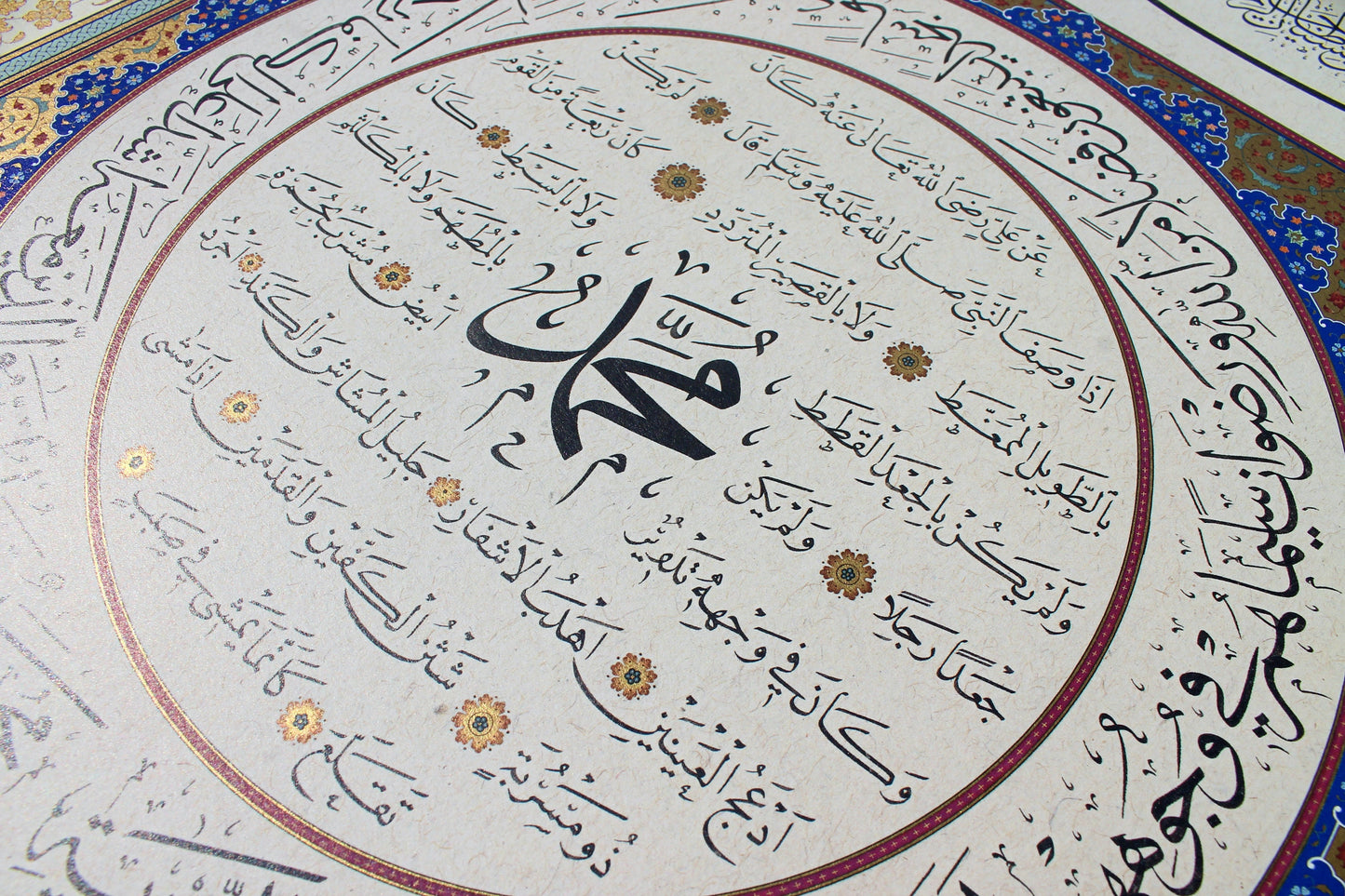
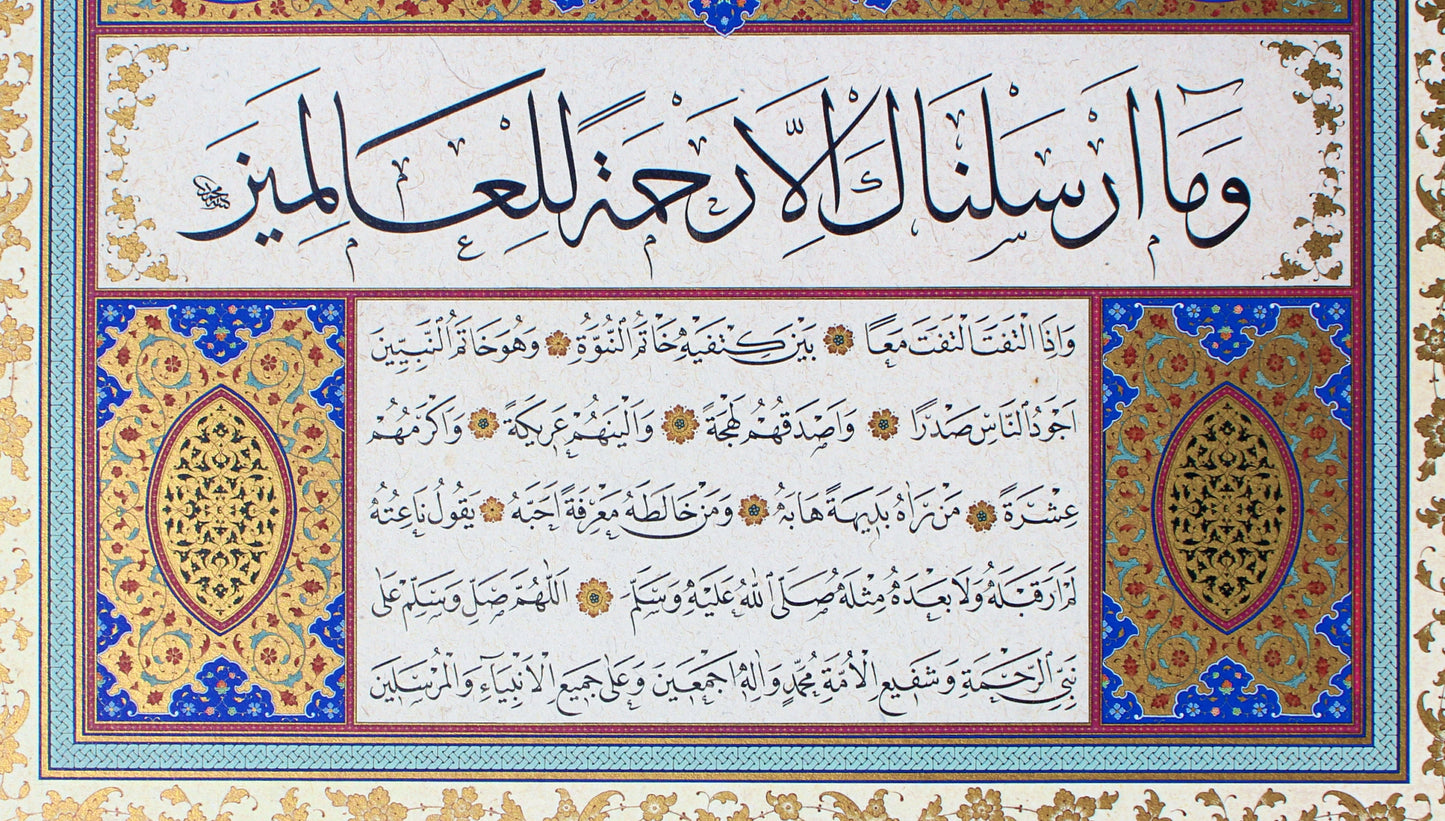
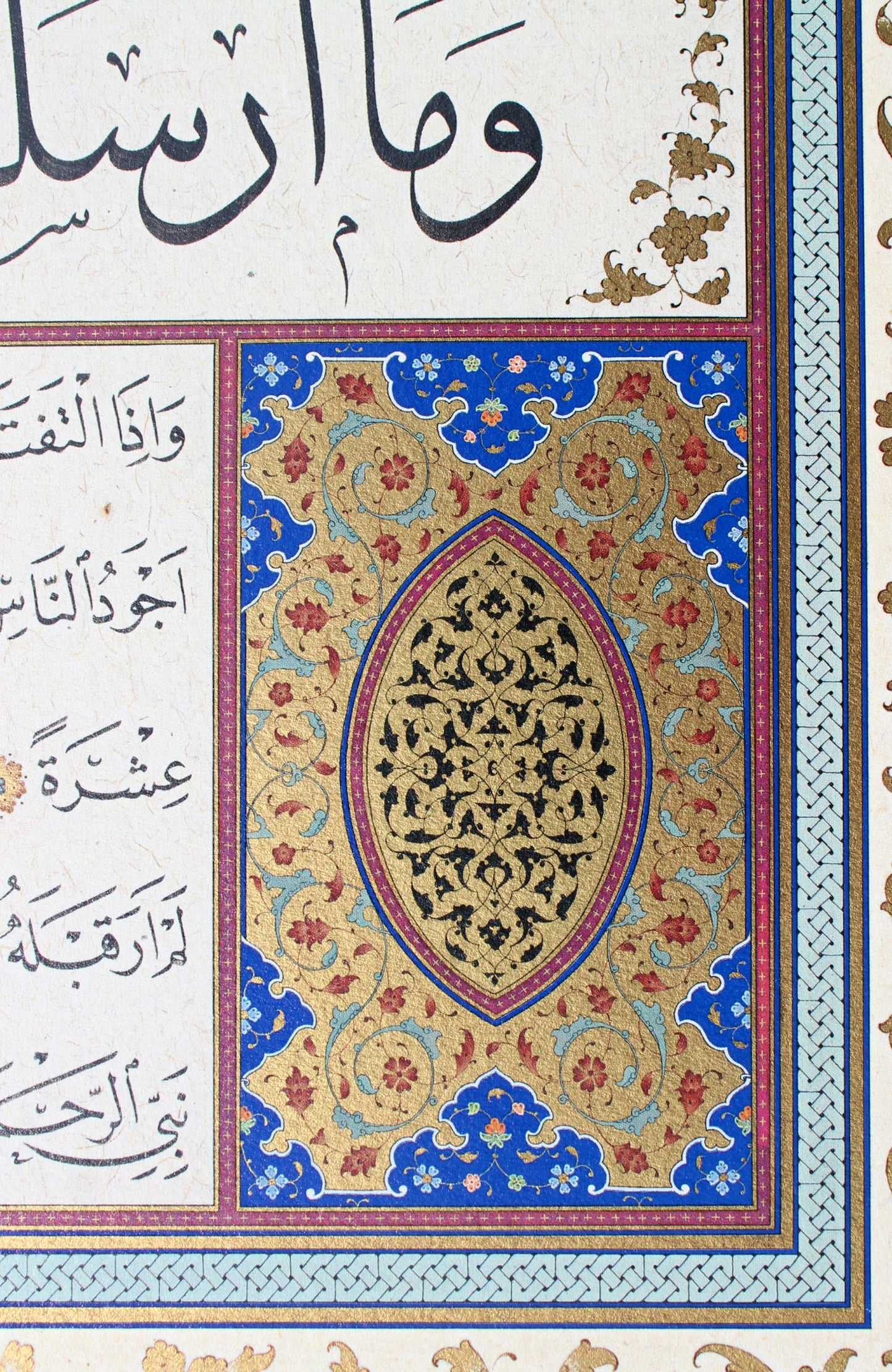
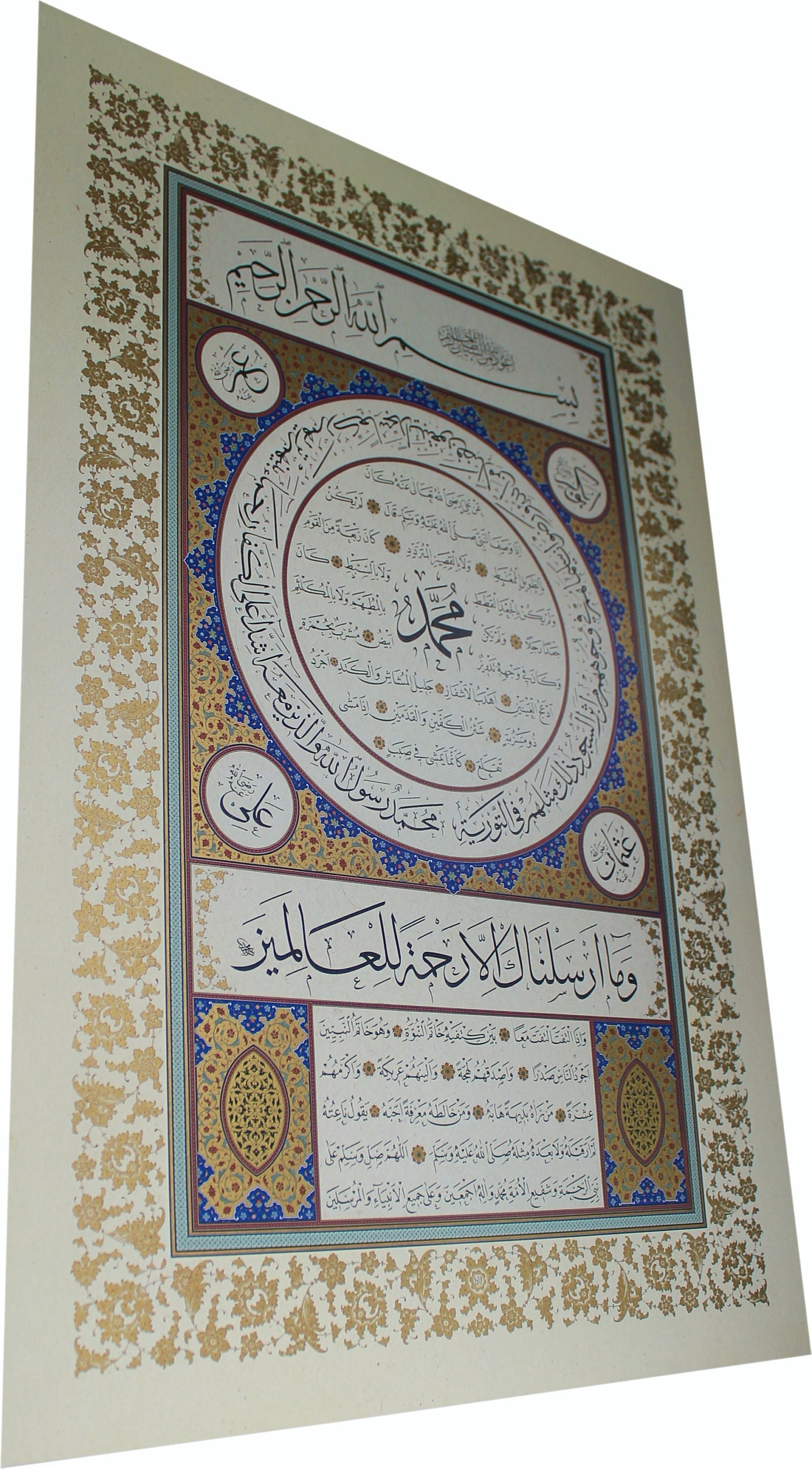

Mehmed Özçay
Born in 1961 in the Çaykara district in Trabzon, Özçay has won prizes in numerous international calligraphy competitions. He continues to serve as a jury member and consultant in many domestic and international exhibitions. In 2015, he headed a team that produced the calligraphy for the King Abdullah Makkah Masjid al-Haram Expansion Project.
A history of the Ottoman Hilye
Initially, the word ‘hilya’ (Turkish: Hilye) referred to the various hadith which describe the beautiful physical appearance and moral character of the Prophet Muhammad. Many of these are found in the ‘Kitab al-Shama’il’ of Imam al-Tirmidhi (died 279 AH/ 892 CE), which was the earliest collection of its kind.
The first person to present the hilye as a calligraphic art form was the Ottoman master calligrapher Hafiz Osman in the later 17th century. He based his work on a famous hadith from the Shama’il. The earliest examples of calligraphic hilyes all carry the name of Hafiz Osman, and together, they show that by the end of the 17th century, Ottoman Muslims had begun to hang verbal portraits of the Prophet Muhammad on their walls. These descriptions were often combined with verses from the Noble Quran.
The basmala at the top of the hilye indicates the position of God above all things. Beneath this is a large rectangular zone (a large roundel surrounded by smaller roundels) which describes the Prophet and mentions the names of those closest to him in rank. The placement of the Rightly-Guided caliphs (and occasionally Hasan and Husayn and/or the Asharat al-Mubashshara) in smaller roundels parallels the monumental wooden panels that were erected in major Ottoman mosques, perhaps most famously the mosque of the Hagia Sophia.
The Prophet's own description in a large circular roundel invokes the similarly shaped sun and moon; the rising sun and the new moon are fitting similes for the Prophet’s beauty. Following this is a third section, featuring a verse from the Quran which refers to the Prophet as God's messenger to all people. Thus the middle section (between the basmala and the verse) can be seen as a zone intermediate between God and humanity, which befits the Prophet’s station as a messenger sent by God and an intercessor on behalf of his umma.
The final elements in the layout of the hilye usually identify the name of the scribe and the date of completion, which is the lowest position on the panel, and which well represents the humility of the calligrapher, who often identifies himself as al-faqir, one who is poor and destitute, and beseeches God to forgive his sins.

